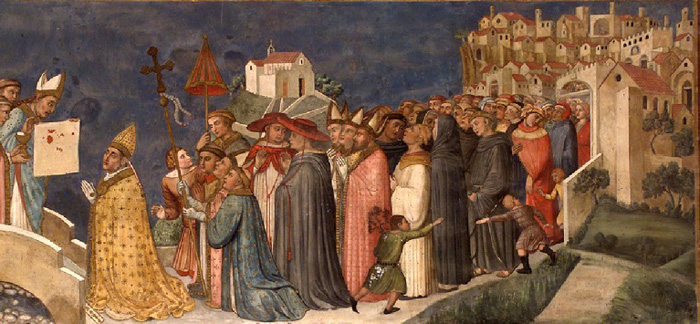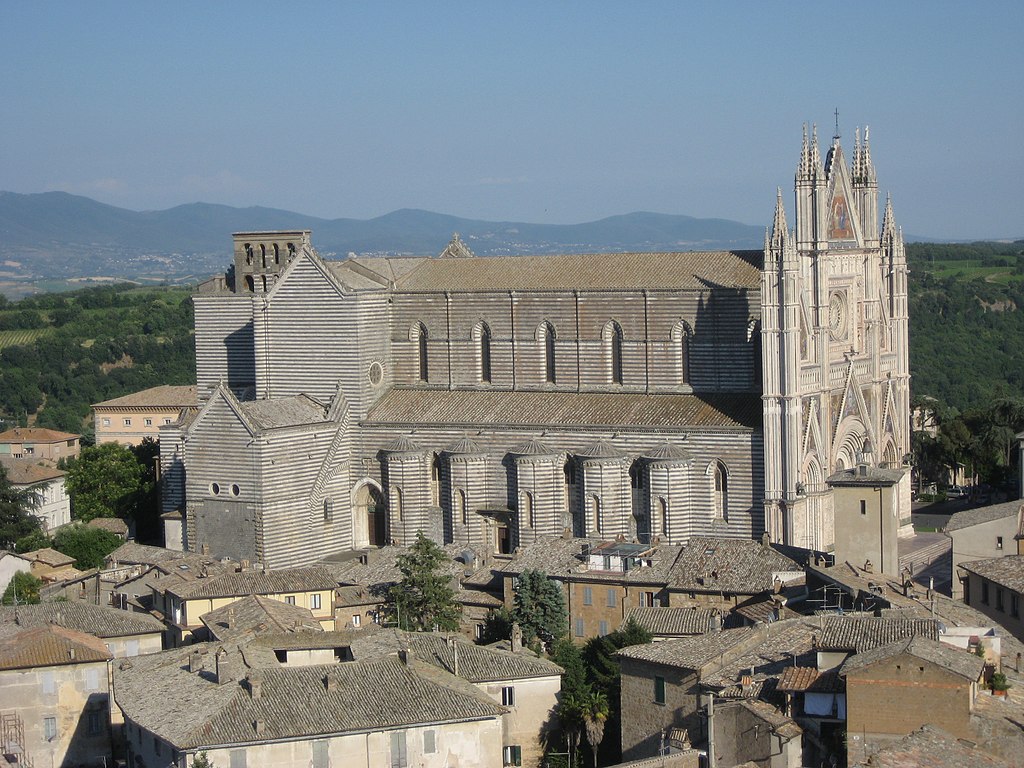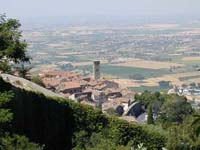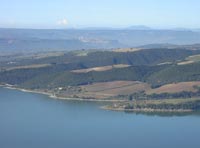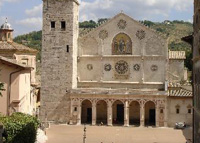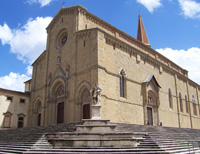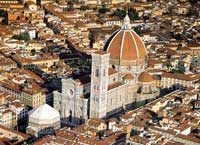Orvieto's Duomo was built in order to celebrate a fundamental event for the Christian world: the 1263 Miracle of Bolsena. As narrated by a sacred representation dating back to the first half of the fourteenth century and the subsequent popular tradition, a Bohemian priest, tormented by the doubt whether the consecrated host was Christ's body and blood, went on a pilgrimage to Rome in 1263 to strengthen his faith. On his way back he stopped in Bolsena to celebrate mass at the altar of Saint Christina's Basilica; at the moment of consecration he saw the broken host spill some stills of blood, that stained the Corporal, a linen cloth used during the functions.
The appearance of blood was seen as a miracle to affirm the Roman Catholic doctrine of transubstantiation, which states that the bread and wine become the Body and Blood of Christ at the moment of consecration during the Mass. Today the Corporal of Bolsena is preserved in a rich reliquary at Orvieto in the cathedral. The reddish spots on the cloth, upon close observation, show the profile of a face similar to those that traditionally represent Jesus Christ.
|
One of the high points of Italian architecture throughout the ages, the façade of the Duomo of Orvieto is structured like a tryptich, and is richly decorated in a dazzling profusion of polychrome marble, sculptures and mosaic. The median entrance and the central rose window are 14th century, designed by Andrea Orgagna.
The three-nave interior is partly Romanesque in style, as in the transept that cuts across the central block of the building forming a cross shape. The presbyterium, a part of the church that was reserved only for the clergy, is Gothic.
Compared with other cathedrals in Europe, the Duomo of Orvieto is less formally linear and uses a greater variety of materials.
The Duomo is also known for the Last Judgement cycle of frescoes by Luca Signorelli. The cycle had in fact been started by Beato Angelico, who was aided by Benozzo Gozzoli.
Contrary to the trend in Europe at the time, Gothic architects in Italy designed large, flat surfaces on the interior walls of their cathedrals, so that painters could cover them in frescoes. The independent free city states vied with each other and with the powerful abbeys in securing the work of the finest painters of the time.
Artists were able to elaborate a personal concept of painting that resulted in a new way of depicting interiors. Landscape came to be painted as something living. Greater attention was given to observing the individual and new peaks of elegance were attained in both form and use of colour.
The magnificent bronze portals of the Duomo were completed by Emilio Greco, a sculptor whose name has become synonymous with Orvieto also thanks to the collection of 32 bronze sculptures and 60 graphic works and prints that he donated to the city and which are currently housed in the 14th century Palazzo Soliano, next to the cathedral[Museo Emilio Greco].
Art in Tuscany | Luca Signorelli | Fresco Cycle in the San Brizio Chapel, Cathedral, Orvieto
|
